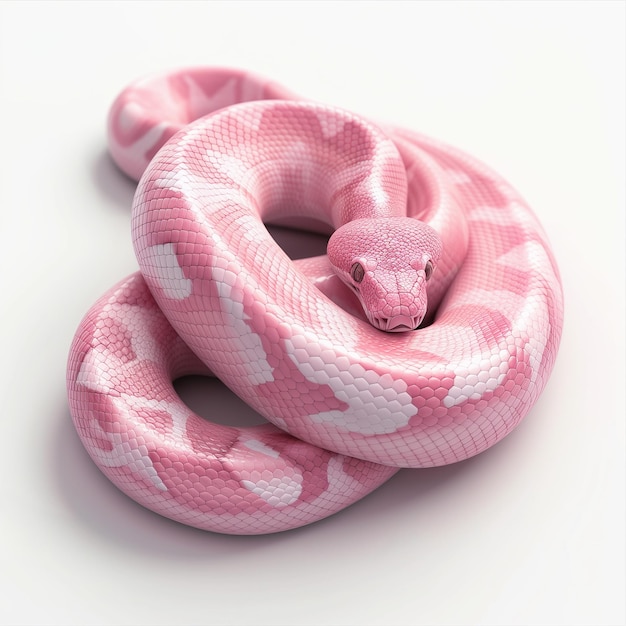When we think of snakes, our minds often conjure images of green, brown, or even black creatures slithering through the wild. However, among the vast diversity of snake species, there exists a rare and stunning phenomenon: pink snakes. These beautiful reptiles captivate the imagination and highlight the incredible diversity of nature.

A Rare and Stunning Phenomenon

Pink snakes are a rare sight in the wild. Their unique coloration can range from soft pastel pinks to vibrant, almost neon hues. This unusual pigmentation is a result of genetic variations, environmental factors, or even specific diet components. The pink coloration provides these snakes with a distinctive appearance that sets them apart from their more commonly colored relatives.
Notable Pink Snake Species

Several species of snakes exhibit pink coloration, each with its unique charm:

- Western Coachwhip (Masticophis flagellum): Found in the southwestern United States, the Western Coachwhip is sometimes seen with a beautiful pink hue. This coloration helps it blend into the desert landscapes of its habitat

- Corn Snake (Pantherophis guttatus): While typically orange or red, some corn snakes are selectively bred in captivity to produce a stunning pink morph. These snakes are popular among reptile enthusiasts for their striking appearance and docile nature.

- Bimini Blind Snake (Typhlops biminiensis): This small, non-venomous snake from the Bahamas often displays a pinkish coloration. Its smooth, glossy scales and diminutive size make it an intriguing species for researchers and hobbyists alike.
The Role of Pink Coloration

In nature, coloration often serves a purpose, whether it be for camouflage, attracting mates, or warning predators. For pink snakes, their coloration can provide camouflage in certain environments, such as pink-hued sands or flowering regions. Additionally, the bright coloration can act as a deterrent to predators, signaling that the snake might be toxic or dangerous, even if it is not.
Conservation and Appreciation

As with many unique and rare species, pink snakes face threats from habitat destruction, climate change, and human activity. Conservation efforts are crucial to protect these beautiful reptiles and their habitats. By raising awareness and supporting conservation initiatives, we can help ensure that future generations can marvel at the enchanting beauty of pink snakes.
Conclusion

Pink snakes are a testament to the wonders of nature’s diversity. Their rare and captivating coloration makes them a true gem in the animal kingdom. Whether found in the wild or admired in captivity, these beautiful reptiles remind us of the endless variations and surprises that the natural world has to offer. Through appreciation and conservation, we can continue to celebrate and protect these extraordinary creatures.





